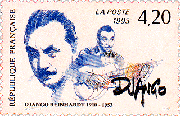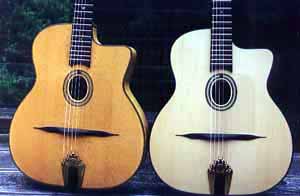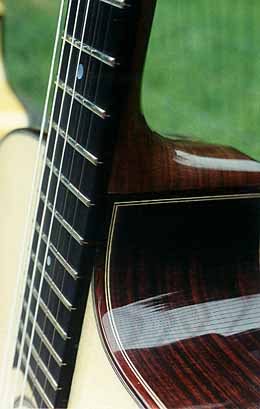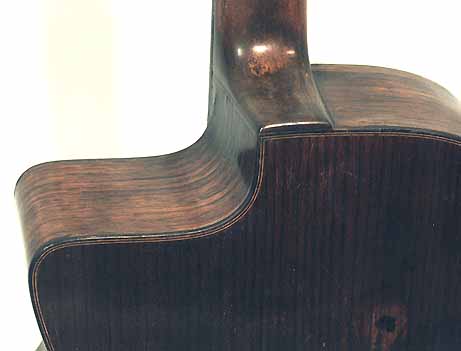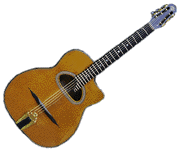
details -on
bracing
Background
information
the rest of
the site
Email:
click
here
|
Details, details...
Check the details menu at the left for some other topics on other pages. Here's an oft-asked question about finishes: Q: Should I get my guitar tinted? I don't want it to be so white!
A: If you really can't wait, get it tinted. But look at this
photo above.
Need more convincing? Check the photo below.
Sorry for the quality here, it was just a quick snapshot, but
you get
the idea. On the left is Selmer #503, better known as Django's main
squeeze
through the last dozen years of his life. At its side is a fresh (the
photo
was taken in 1992) Dupont MD50 - same guitar, same spruce, same finish.
What a difference a day makes, non?
Here are some other pages on these kinds of things: -on bracing Here is a look at binding detail.
In the old days, Selmer often used a dyed black wood for
binding. Maurice
Dupont has used this as well, but because finding a supply of dyed
black
strips of acceptable quality is so difficult, he currently prefers
natural
rosewood. Selmer also used this, even for the small black strips around
the top and the oval rosette. Here's an example:
On this late 1940 Selmer, you can see the dyed wood
binding, with
the w-b-w purfling strips on back, but not the sides.
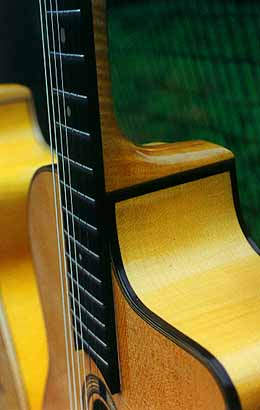 Here is an early MD20, also with the dyed black binding and no
purfling
strips on the sides. There are some on the face, though they're a bit
hard
to see in this photo.
This unusual guitar belongs to Howard Alden, one of my
favorite guitarists,
and it's an MD50 - laminated, but in maple instead of the usual Indian
rosewood. It is also tinted - except for the binding. The maple on the
sides would precisely match the binding if it were not tinted. If you
saw
the Woody Allen film called Sweet and Lowdown, this is
the
guitar you heard on the soundtrack. If you saw the Sean Penn attempting
to look like a guitar player, you saw him playing the guitar in the
photo
below. This guitar now belongs to Paul Mehling. The guitar next to it
-
Howard's - remains of course in Howard's collection.
 Have a topic you think is worth some discussion
here?
This page © 1999-2011 Paul Hostetter. All rights reserved. |
